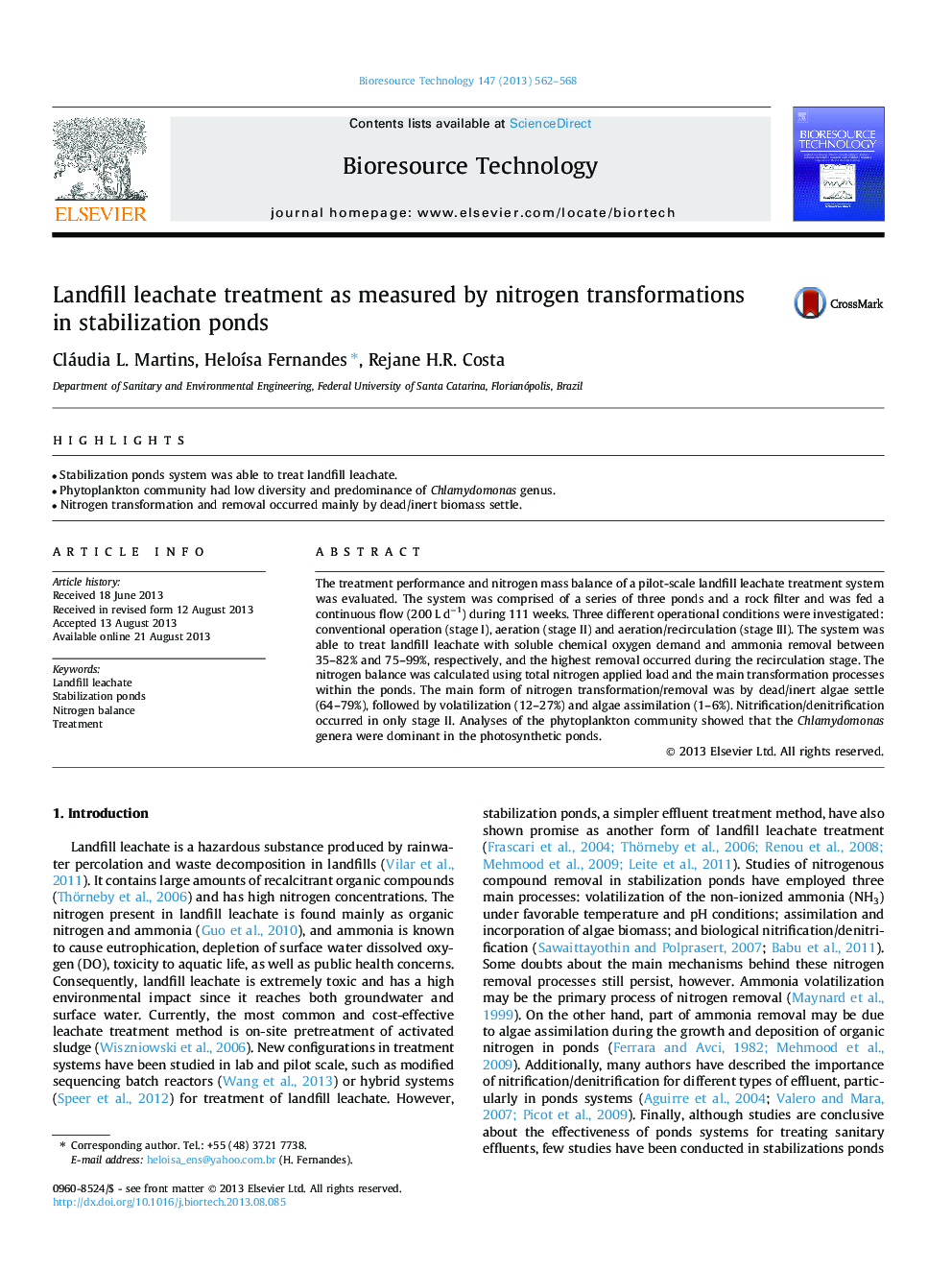| Article ID | Journal | Published Year | Pages | File Type |
|---|---|---|---|---|
| 7080437 | Bioresource Technology | 2013 | 7 Pages |
Abstract
The treatment performance and nitrogen mass balance of a pilot-scale landfill leachate treatment system was evaluated. The system was comprised of a series of three ponds and a rock filter and was fed a continuous flow (200Â LÂ dâ1) during 111Â weeks. Three different operational conditions were investigated: conventional operation (stage I), aeration (stage II) and aeration/recirculation (stage III). The system was able to treat landfill leachate with soluble chemical oxygen demand and ammonia removal between 35-82% and 75-99%, respectively, and the highest removal occurred during the recirculation stage. The nitrogen balance was calculated using total nitrogen applied load and the main transformation processes within the ponds. The main form of nitrogen transformation/removal was by dead/inert algae settle (64-79%), followed by volatilization (12-27%) and algae assimilation (1-6%). Nitrification/denitrification occurred in only stage II. Analyses of the phytoplankton community showed that the Chlamydomonas genera were dominant in the photosynthetic ponds.
Related Topics
Physical Sciences and Engineering
Chemical Engineering
Process Chemistry and Technology
Authors
Cláudia L. Martins, HeloÃsa Fernandes, Rejane H.R. Costa,
